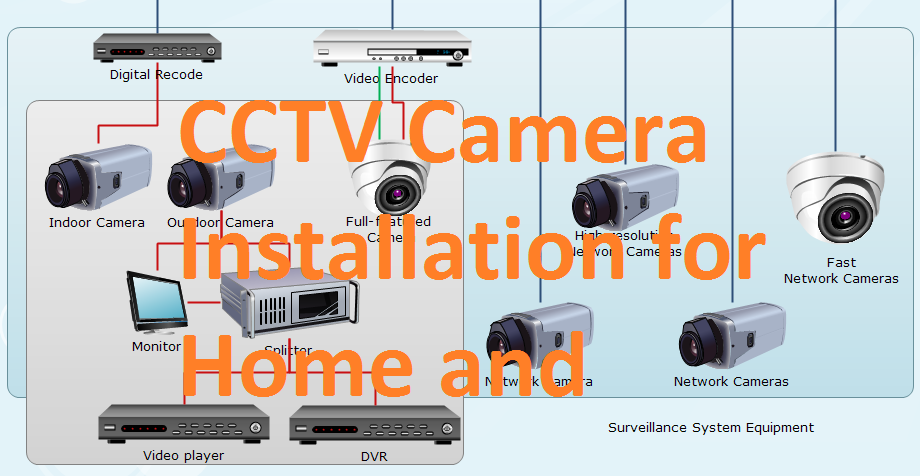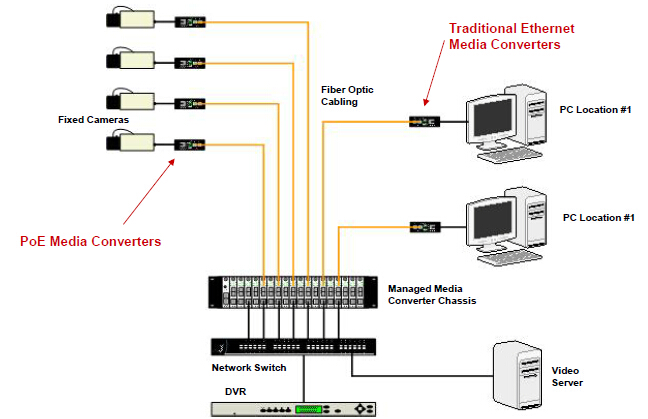How to Improve Surveillance with CCTV Fiber Integration in Your Monitoring Setup
How to Improve Surveillance with CCTV Fiber Integration in Your Monitoring Setup
Blog Article
Top Factors to Choose CCTV Cameras With Fiber Optic Result for Trusted Monitoring
In the evolving landscape of surveillance technology, the selection of CCTV cameras with fiber optic outcome provides a compelling situation for reliability and effectiveness. As the demand for top notch security continues to climb, comprehending the cost-effectiveness and adaptability of these setups comes to be extremely important.
Superior Image Top Quality

This improved image top quality is especially critical in setups needing careful tracking, such as banks, airports, and critical framework. The high data transfer of fiber optic innovation supports innovative attributes like high-definition video and vibrant variety, permitting far better presence in low-light conditions.

Extended Transmission Distance
One of the significant benefits of CCTV video cameras with fiber optic output is their capacity for extended transmission range. Unlike traditional copper wire systems, which are limited by signal destruction over fars away, fiber optic innovation permits for the transmission of premium video clip signals over a number of kilometers without loss of top quality. This ability is particularly helpful for large centers, universities, or urban atmospheres where security coverage is necessary.
Using optical fiber in CCTV systems makes it possible for seamless combination throughout extensive areas, promoting the implementation of electronic cameras in remote locations that would otherwise be testing to attach. This prolonged transmission range is not only helpful for scalability yet additionally for the versatility in system design. Installers can tactically place cameras to optimize insurance coverage, guaranteeing that essential locations are checked effectively.
Moreover, the ability to cover long ranges without the demand for repeaters or added tools minimizes general setup complexity and costs. fence detection system. Because of this, businesses and companies can apply durable monitoring services that maintain high efficiency over huge areas, enhancing security methods and functional effectiveness. In summary, the extensive transmission distance given by fiber optic outcome stands as a compelling factor to select these advanced CCTV systems for dependable surveillance
Boosted Interference Resistance
The advanced modern technology of fiber optic outcome not only promotes prolonged transmission distances yet likewise offers improved interference resistance. Fiber optic cables go send information as light signals with glass or plastic fibers, making them inherently look these up unsusceptible to electromagnetic interference (EMI) and radio regularity interference (RFI) This particular is especially helpful in environments where digital devices might create sound, such as industrial settings or largely inhabited city areas.
Unlike traditional copper wires, which can serve as antennas and grab undesirable signals that degrade video clip high quality, optical fiber preserve signal honesty over lengthy distances. This makes certain that the monitoring footage caught remains clear and reliable, despite external electromagnetic disruptions. Additionally, fiber optic cords are less at risk to indicate loss as a result of attenuation, permitting top quality video clip transmission also in tough conditions.
Additionally, the usage of fiber optics adds to overall system protection, as the signals can not be easily tapped or interfered with, reducing the risk of unapproved access. By buying CCTV cams with fiber optic result, users can delight in remarkable efficiency and tranquility of mind, knowing that their surveillance system is resilient against interference and with the ability of delivering consistent, high-quality video.
Cost-Effectiveness In Time
With time, the cost-effectiveness of CCTV cams with fiber optic outcome comes to be progressively noticeable. While the first investment may be greater than traditional copper-based systems, the long-lasting monetary advantages significantly counter this difference. Fiber optic modern technology uses greater durability and reduced maintenance expenses, resulting in fewer substitutes and repair services over the lifespan of the cams.
One of the considerable cost-saving factors is the minimized risk of signal deterioration over lengthy distances. Optical fiber maintain high-quality video transmission, which decreases the need for signal boosters and extra equipment that can drive up complete expenses. The strength of fiber cable televisions versus environmental conditions suggests they are less most likely to suffer damages from weather, parasites, or electromagnetic disturbance, translating to lower substitute prices.
Additionally, the energy performance of fiber optic systems adds to decreased functional costs. These cams usually call for much less power to run compared to conventional systems, hence lowering electrical energy costs over time. When combined with the potential for enhanced safety outcomes, the overall roi for CCTV more information electronic cameras with fiber optic result clearly demonstrates their economical benefits in trusted security remedies.
Versatile Installation Options
With a series of versatile installation alternatives, CCTV video cameras equipped with fiber optic result can be flawlessly incorporated into various settings. Their lightweight design and flexibility in placing setups allow for installations in both interior and outside settings, adjusting to the details needs of any kind of monitoring project.
From business properties to domestic locations, fiber optic CCTV systems can be tactically put to optimize coverage while decreasing blind areas. The ability to set up these cameras at varying elevations and angles enhances their efficiency in keeping track of essential areas. The long-distance transmission capabilities of fiber optics minimize the demand for repeaters, thus simplifying installment in large locations.
Furthermore, these electronic cameras can be integrated with existing infrastructure, such as posts or constructing exteriors, which offers an economical remedy for upgrading surveillance systems without substantial improvements. Their resilience to environmental aspects likewise makes fiber optic cameras appropriate for testing areas, consisting of commercial websites or locations with high electromagnetic interference.
Conclusion

Report this page